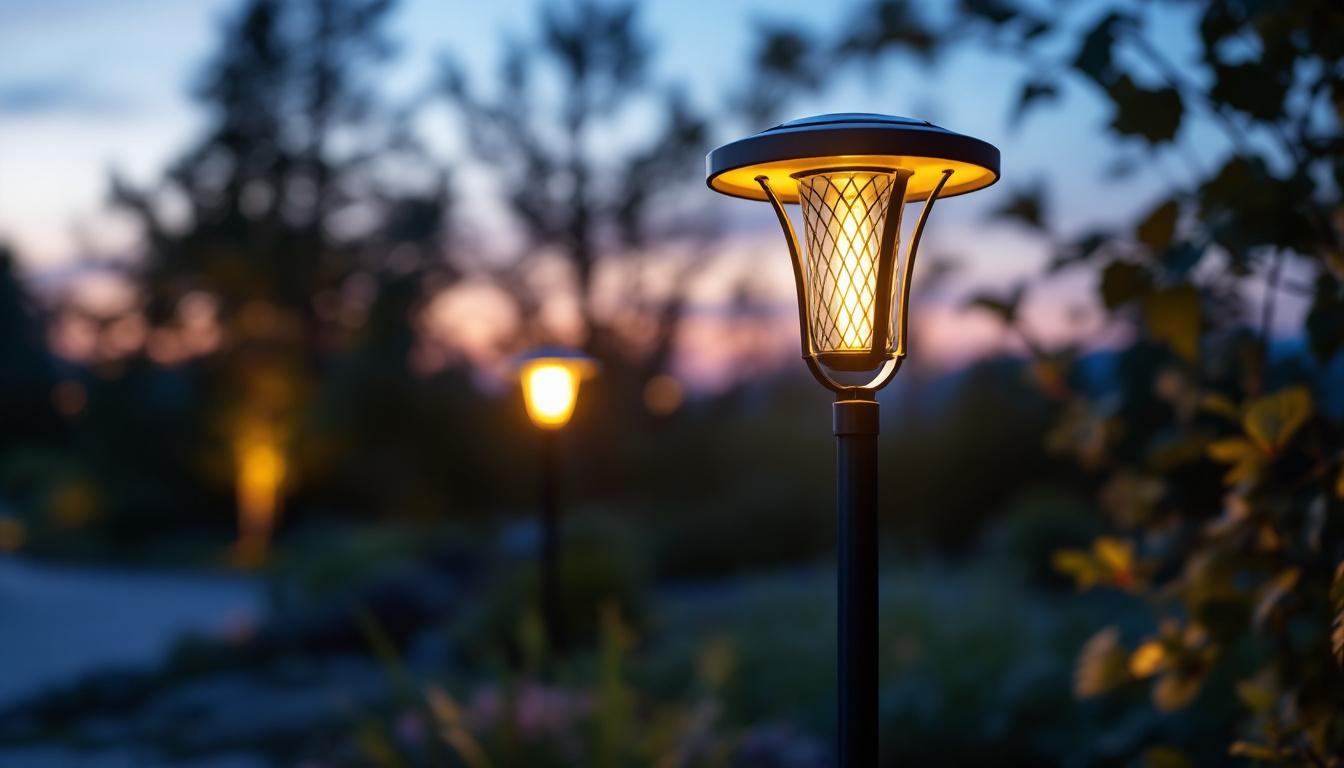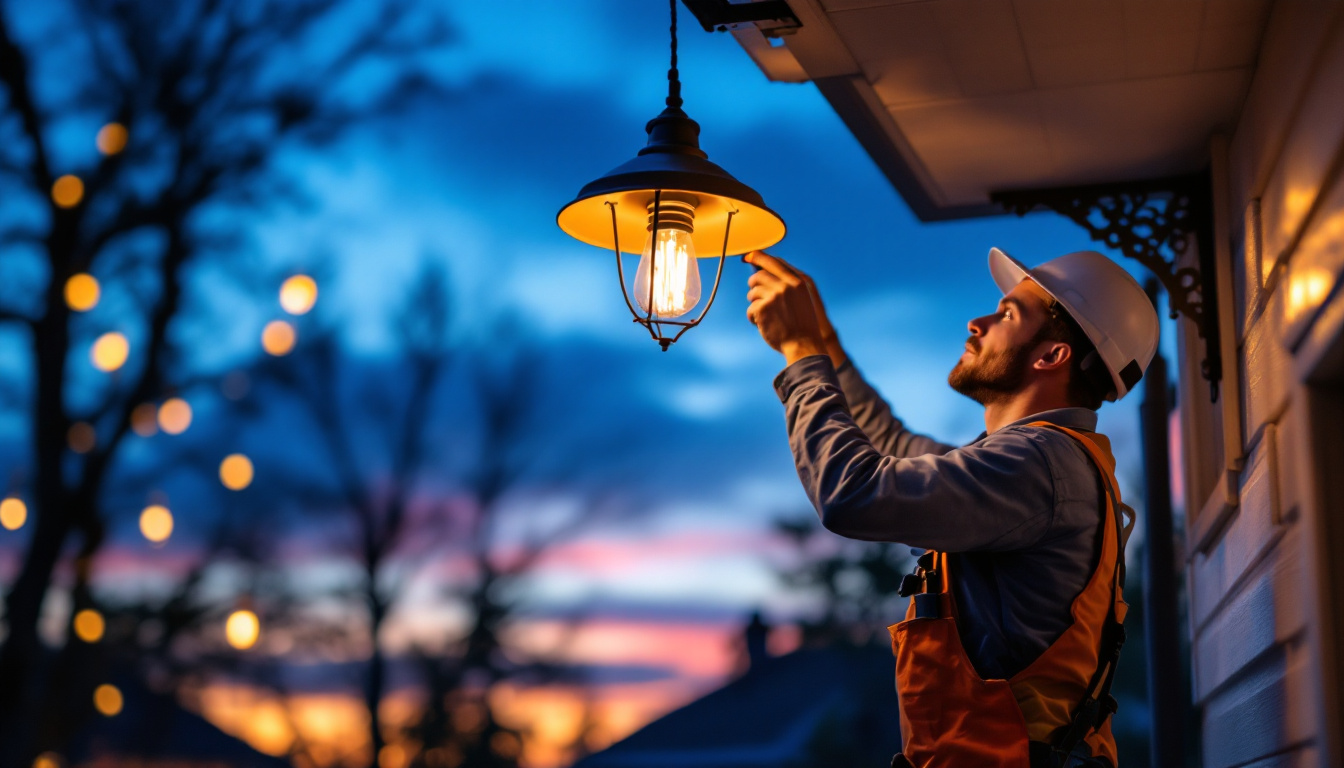
As the demand for sustainable and energy-efficient lighting solutions continues to grow, metal solar lights have emerged as a popular choice for both residential and commercial applications. For lighting contractors, understanding the nuances of these fixtures is essential to providing clients with the best options available. This article will explore the benefits, installation considerations, and maintenance tips for metal solar lights, ensuring that contractors are well-equipped to meet client needs.
Metal solar lights are outdoor lighting fixtures that utilize solar panels to harness sunlight during the day, converting it into energy to power LED bulbs at night. These lights are typically made from durable materials such as aluminum or stainless steel, which not only enhance their aesthetic appeal but also contribute to their longevity. The choice of metal not only provides a sleek finish but also ensures resistance against rust and corrosion, making them ideal for various climates and environments.
One of the primary advantages of metal solar lights is their energy efficiency. By relying on solar power, these lights significantly reduce electricity costs, making them an attractive option for environmentally conscious clients. Additionally, the use of LED technology ensures that the lights consume minimal energy while providing bright illumination. This combination of solar power and LED efficiency not only lowers energy bills but also minimizes the carbon footprint associated with traditional lighting solutions.
Another benefit is the low maintenance requirement associated with solar lights. Once installed, they generally require little to no upkeep, as they are designed to withstand various weather conditions. This durability is particularly important for contractors, as it translates to fewer service calls and increased customer satisfaction. Furthermore, many metal solar lights come equipped with automatic sensors that turn the lights on at dusk and off at dawn, further enhancing their convenience and efficiency.
Metal solar lights come in a wide range of designs, from sleek modern styles to more traditional looks. This versatility allows contractors to offer clients options that complement their existing landscape or architectural features. Whether the project involves a contemporary garden, a rustic pathway, or a commercial outdoor space, there is likely a suitable metal solar light design available. Beyond aesthetics, these lights can also be strategically placed to highlight specific features of a property, such as trees, sculptures, or architectural details, creating a beautiful ambiance during the night.
Moreover, the adaptability of metal solar lights extends to their functionality. Many models are designed with adjustable brightness settings or color temperature options, allowing users to customize the lighting to suit different occasions or moods. For instance, a warm glow may be perfect for a cozy outdoor gathering, while brighter illumination might be ideal for security purposes. This level of customization not only enhances the user experience but also makes metal solar lights a versatile choice for a variety of outdoor settings.
Proper installation is crucial for maximizing the performance of metal solar lights. As contractors, understanding the key factors that influence installation can lead to better outcomes and happier clients.
Before installation, conducting a thorough site assessment is essential. This involves evaluating the area where the lights will be placed, taking into account factors such as sunlight exposure, potential obstructions, and the intended purpose of the lighting. For instance, areas with ample sunlight will allow solar panels to charge effectively, while shaded spots may hinder performance.
Additionally, understanding the landscape’s layout can help determine the optimal placement of lights to achieve desired illumination levels. This assessment also provides an opportunity to discuss with clients their specific lighting needs and preferences.
Metal solar lights can be mounted in various ways, including ground stakes, wall mounts, or even as part of larger structures. The choice of mounting option will depend on the design of the light fixture and the specific requirements of the project. It is important for contractors to familiarize themselves with the installation instructions provided by manufacturers to ensure a secure and stable setup.
Moreover, considering the height at which lights are mounted is crucial for achieving optimal light distribution. Lights that are too low may not provide sufficient illumination, while those that are too high may create unwanted glare. Finding the right balance is key to effective lighting design.
While metal solar lights are generally low maintenance, routine care can significantly extend their lifespan and performance. Contractors should educate clients on the best practices for maintaining these fixtures to ensure they continue to function effectively over time.
One of the simplest yet most effective maintenance tasks is regular cleaning of the solar panels. Dust, dirt, and debris can accumulate on the surface, blocking sunlight and reducing charging efficiency. Contractors should recommend that clients clean the panels periodically, especially after storms or during seasonal changes when debris is more likely to accumulate.
Using a soft cloth and mild soap can help maintain the panels without causing damage. It is also advisable to check for any obstructions, such as overgrown foliage, that may cast shadows on the solar panels.
The batteries in metal solar lights play a critical role in their performance. Over time, batteries may lose their ability to hold a charge, necessitating replacement. Contractors should inform clients about the typical lifespan of the batteries used in their solar lights and recommend checking them annually.
When replacing batteries, it is important to use compatible models as specified by the manufacturer. This ensures optimal performance and prevents potential damage to the lighting system.
In today’s eco-conscious market, the environmental benefits of metal solar lights cannot be overstated. By harnessing renewable energy, these lights contribute to reducing carbon footprints and promoting sustainability.
Metal solar lights operate independently of the electrical grid, which means they do not contribute to energy consumption from non-renewable sources. For contractors, this aspect can be a significant selling point when discussing options with clients who prioritize sustainability in their projects.
Moreover, the use of LED technology in solar lights further enhances their eco-friendliness. LEDs consume less energy compared to traditional incandescent bulbs, resulting in lower overall energy usage and longer lifespans.
Incorporating solar lighting into outdoor spaces can also promote biodiversity. By illuminating pathways and gardens without disrupting the natural ecosystem, these lights can enhance the aesthetic appeal of landscapes while supporting local wildlife. Contractors can emphasize this benefit to clients who are looking to create environmentally friendly outdoor areas.
Despite their growing popularity, several misconceptions about metal solar lights persist. Addressing these misconceptions can help contractors better educate their clients and dispel any doubts they may have.
One common misconception is that solar lights are ineffective in cloudy or rainy weather. While it is true that solar panels generate less energy in such conditions, many modern solar lights are designed to store enough energy to function even during periods of limited sunlight. Educating clients about this capability can alleviate concerns about performance.
Contractors should also explain that the efficiency of solar lights can vary based on location and climate. In areas with frequent overcast conditions, it may be beneficial to recommend solar lights with larger battery capacities or those equipped with advanced solar technology.
Another misconception revolves around the initial costs associated with purchasing and installing solar lights. While the upfront investment may be higher than traditional lighting options, the long-term savings in energy costs and maintenance can make metal solar lights a more economical choice over time. Contractors should highlight the potential return on investment to help clients see the bigger picture.
The landscape of solar lighting is continually evolving, with new technologies and designs emerging to meet the needs of consumers and contractors alike. Staying informed about these trends can help contractors remain competitive in the market.
One of the most exciting trends in solar lighting is the integration of smart technology. Smart solar lights can be controlled via mobile apps, allowing users to adjust settings, schedules, and even monitor energy usage. This feature adds a level of convenience and customization that appeals to tech-savvy clients.
Contractors should consider familiarizing themselves with these smart options, as they may become increasingly popular among homeowners and businesses looking for advanced solutions.
As design preferences evolve, manufacturers are focusing on creating solar lights that not only perform well but also enhance the visual appeal of outdoor spaces. This includes innovative designs, customizable colors, and decorative features that can elevate the overall aesthetic of a property.
Contractors should stay updated on the latest design trends to offer clients a diverse range of options that suit their style and preferences.
Metal solar lights represent a significant advancement in outdoor lighting technology, offering contractors a range of benefits to present to their clients. By understanding the intricacies of these fixtures, including their installation requirements, maintenance needs, and environmental impact, lighting contractors can provide informed recommendations that meet the diverse needs of their customers.
As the demand for sustainable and energy-efficient lighting solutions continues to rise, contractors who embrace the advantages of metal solar lights will be well-positioned to succeed in an evolving market. By staying informed about trends and addressing common misconceptions, lighting professionals can enhance their expertise and ensure that they are providing the best solutions for their clients.
Ready to elevate your lighting solutions with the efficiency and sustainability of metal solar lights? Look no further than LumenWholesale for a vast selection of spec-grade lighting products designed to meet the needs of discerning contractors. With our commitment to quality, affordability, and convenience, you can access the best in solar lighting technology at wholesale prices. Say goodbye to inflated markups and enjoy the benefits of bulk buying with free shipping. Make your next project shine by choosing Wholesale Lighting at the Best Value with LumenWholesale.

Discover how landscape wiring connectors can transform your outdoor lighting projects from ordinary to extraordinary.

Discover essential tips and expert advice for lighting contractors on mastering the installation of hanging exterior lights.

Illuminate your mailbox with style and security using expert insights from top lighting contractors.

Discover everything driveway lamps need to know—lighting tips, installation insights, and benefits for contractors.